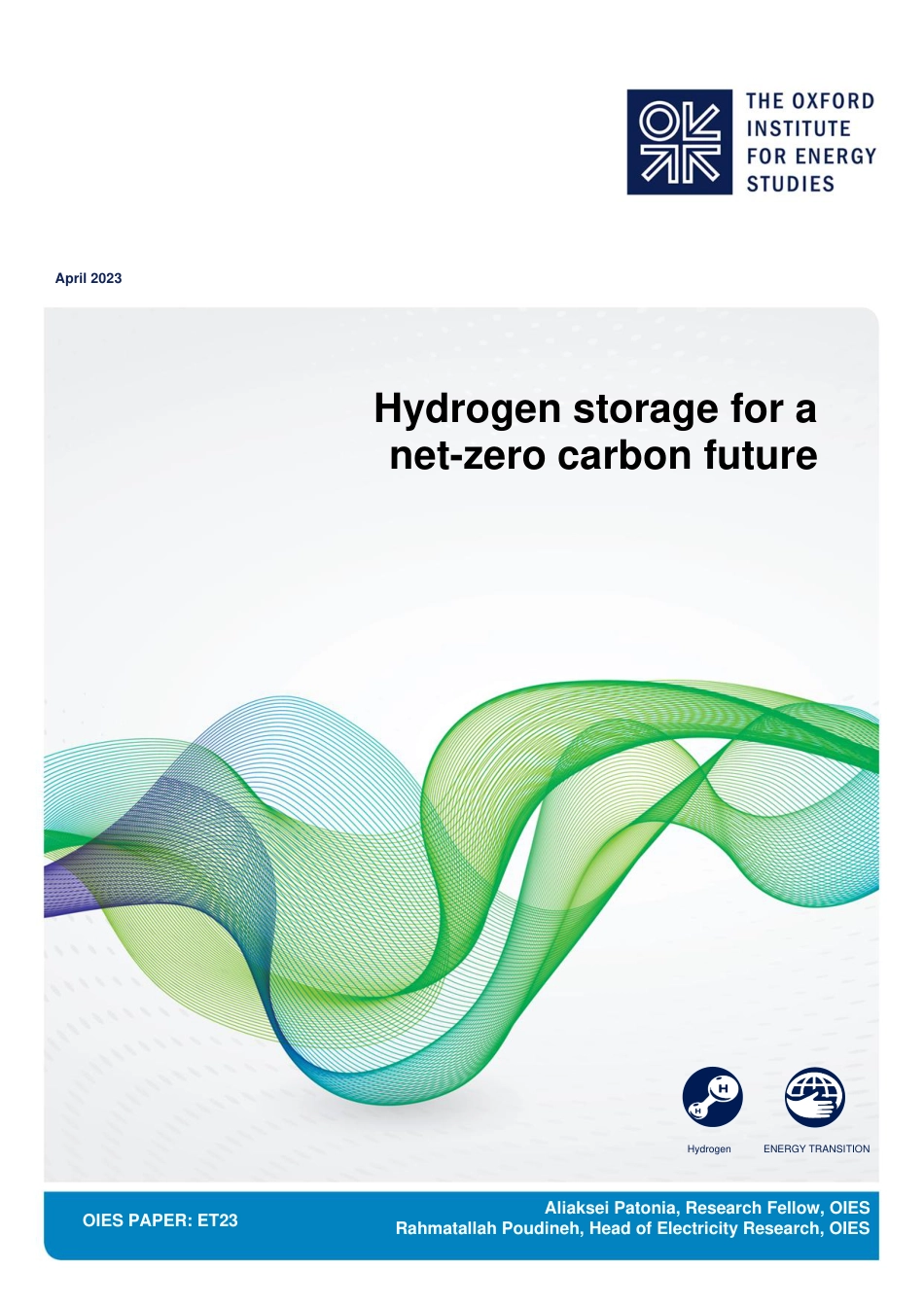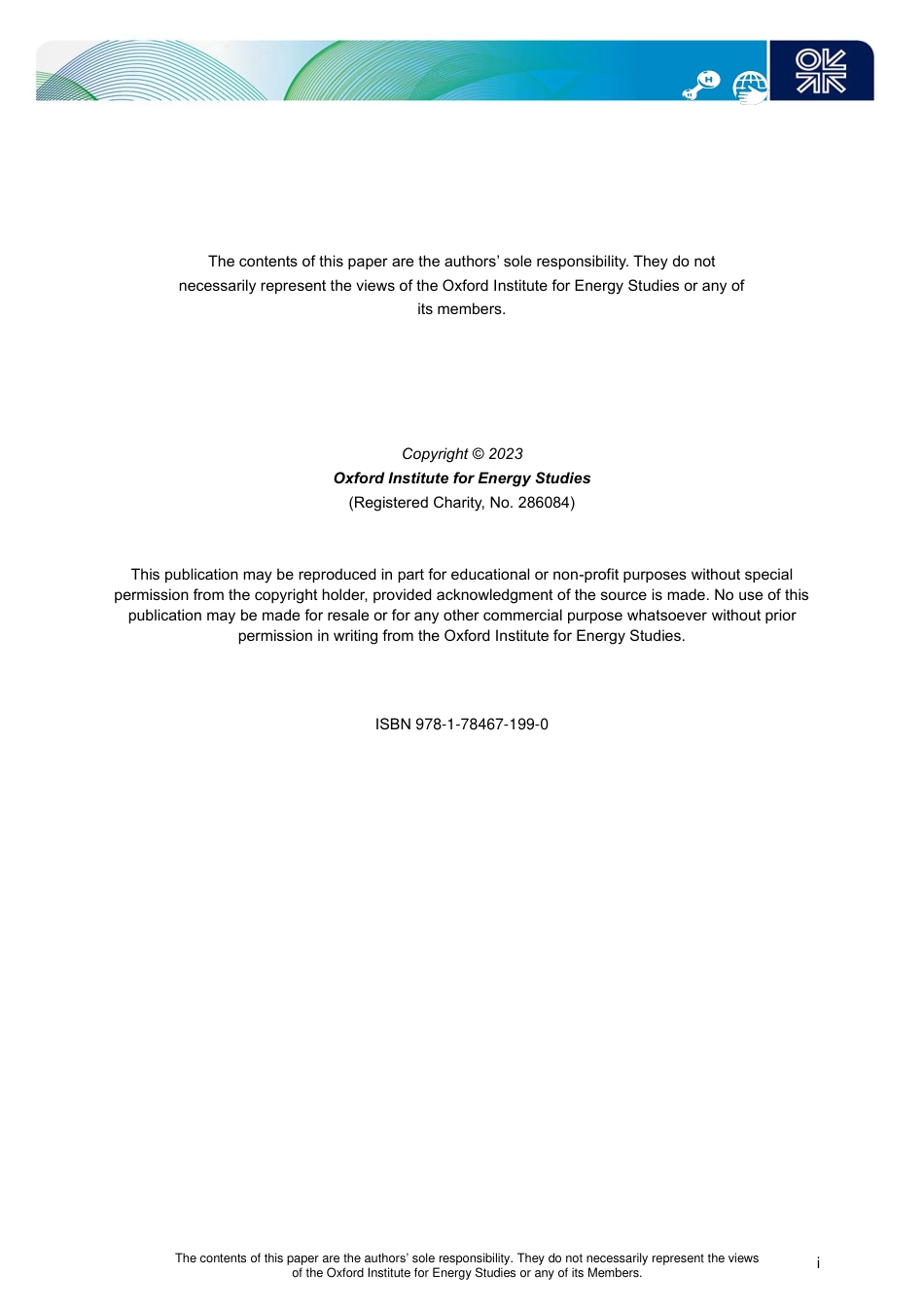ENERGY TRANSITION ENERGY TRANSITION Hydrogen CHINA April 2023 December 2021 OIES PAPER: ET23 OIES PAPER: ET06 Aliaksei Patonia, Research Fellow, OIES Rahmatallah Poudineh, Head of Electricity Research, OIES Anders Hove, Research Associate, OIES Michal Meidan, Senior Research Fellow, OIES Philip Andrews Speed Senior Research Fellow OIESHydrogen storage for a net-zero carbon future The contents of this paper are the authors’ sole responsibility. They do not necessarily represent the views of the Oxford Institute for Energy Studies or any of its Members. i The contents of this paper are the authors’ sole responsibility. They do not necessarily represent the views of the Oxford Institute for Energy Studies or any of its members. Copyright © 2023 Oxford Institute for Energy Studies (Registered Charity, No. 286084) This publication may be reproduced in part for educational or non-profit purposes without special permission from the copyright holder, provided acknowledgment of the source is made. No use of this publication may be made for resale or for any other commercial purpose whatsoever without prior permission in writing from the Oxford Institute for Energy Studies. ISBN 978-1-78467-199-0 The contents of this paper are the authors’ sole responsibility. They do not necessarily represent the views of the Oxford Institute for Energy Studies or any of its Members. ii Abstract If a hydrogen economy is to become a reality, along with efficient and decarbonized production and adequate transportation infrastructure, deployment of suitable hydrogen storage facilities will be crucial. This is because, due to various technical and economic reasons, there is a serious possibility of an imbalance between hydrogen supply...



